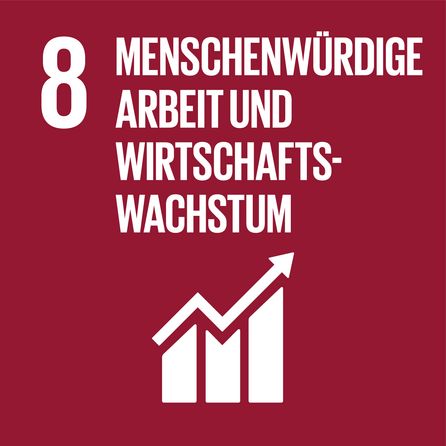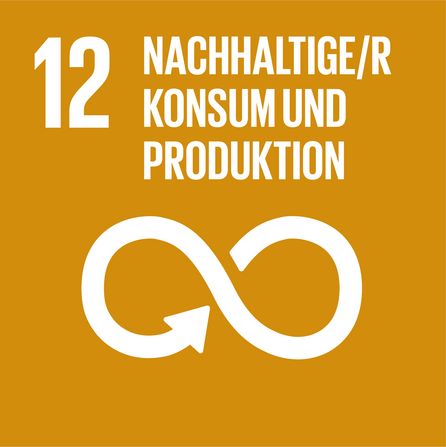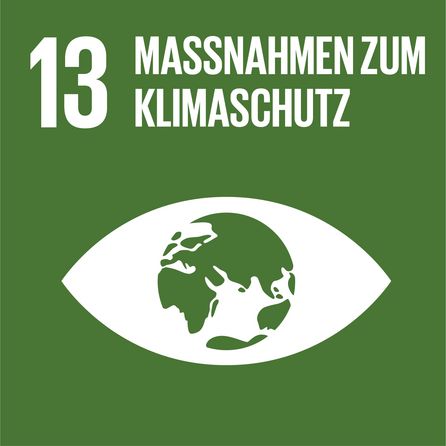- Targets for Governance
- Targets for Teaching, Studying and further Education
- Targets and Indicators for Research and Development
- Targets and indicators for university operations, procurement and climate
- Targets and indicators for less inequality - Third Mission (TM)
- Targets and indicators for transparency and reporting
University operations, procurement and climate
Field of action 4
![[Translate to English:] Handlungsfeld: Hochschulbetrieb, Beschaffung und Klima](/fileadmin/public/Nachhaltigkeit/Nachhaltigkeitsstrategie/Logos_Handlungsfelder/HF_Betrieb__Beschaffung__Klia.png)



Goals and indicators
Indicators
- 4.1.1 - Recording of water consumption by type of water
- 4.1.2 - Recording of paper procurement and the proportion of recycled paper in total consumption (of A4 paper) has not decreased
- 4.1.3 - Waste prevention concept has been adopted and published
- 4.1.4 - Establishment of a university-wide awareness-raising programme for all university members regarding paper consumption, water conservation and waste prevention in the workplace
- 4.1.5 - The review of whether EMAS certification can be carried out has been completed by the end of 2022
Indicators
4.2.1 - Digitalisation of internal procurement processes
4.2.2 - Recording the scope of selected natural resources (product groups, e.g. paper and wood) that are considered critical and are utilised by procurement processes
4.2.3 - The university's voluntary commitment to sustainable procurement, including procurement criteria, has been adopted and published
4.2.4 - 100 % of employees in purchasing and 5 % of all persons who carry out procurement have taken part in further training on sustainable procurement
Indicators
- 4.3.1 - An offsetting process for our greenhouse gas emissions has been reviewed
- 4.3.2 - Annual compensation for greenhouse gas emissions has been achieved, e.g. as part of climate protection projects
Indicators
- 4.4.1 - GHG emissions recorded and analysed
- 4.4.1.1 - Recording the gross volume of direct GHG emissions (Scope 1)
a. Recording of total electricity consumption and the associated emissions (incl. share of renewable energy)
b. Recording of total heat consumption and the associated emissions (incl. share of renewable energy)
c. Recording of total cooling consumption and the associated emissions (incl. share of renewable energy)
d. Generation of electricity from installed solar panels
e. Fuel consumption and emissions from the use of the university's own vehicle fleet - 4.4.1.2 - Recording the gross volume of indirect energy-related GHG emissions (Scope 2)
a. Green electricity supply at both campus locations - 4.4.1.3 - Recording the gross volume of other indirect energy-related GHG emissions (Scope 3)
a. emissions from commuting by students and employees
b. Emissions from employees travelling on business
- 4.4.1.1 - Recording the gross volume of direct GHG emissions (Scope 1)
- 4.4.2 - Feasibility study on climate neutrality is available
- 4.4.3 - Climate protection concept adopted and published
4.4.1.1 - Recording the gross volume of direct GHG emissions (Scope 1)
a. Recording of total electricity consumption and the associated emissions (incl. share of renewable energy)
b. Recording of total heat consumption and the associated emissions (incl. share of renewable energy)
c. Recording of total cooling consumption and the associated emissions (incl. share of renewable energy)
d. Generation of electricity from installed solar panels
e. Fuel consumption and emissions from the use of the university's own vehicle fleet
4.4.1.2 - Recording the gross volume of indirect energy-related GHG emissions (Scope 2)
a. Purchase of green electricity at both campus locations
4.4.1.3 - Recording the gross volume of other indirect energy-related GHG emissions (Scope 3)
a. Emissions from commuting by students and employees
b. Emissions from staff business trips

